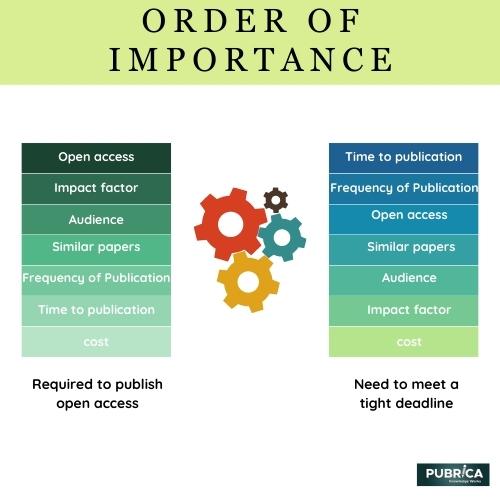A Definitive Guide For Smart Researchers On How To Choose Journals
A Definitive Guide For Smart Researchers On How To Choose Journals
The journal selection procedure is naturally difficult for most authors. There are around 42,500 peer-reviewed journals and 11,811 open-access journals, with new journals, including predatory ones, being published each year. For many, having their research published is the ultimate aim; nevertheless, there is evidence that a scientist's reputation in the research community is predicated on both the quantity and quality of their publications. Not only that, but authors must also contend with extended wait times following journal submission and increasing rejection rates, making selecting the proper magazine critical for publication success.
The journal selection process is a crucial step for researchers in ensuring their work's visibility, credibility, and impact. It involves carefully evaluating and considering various factors to choose the most suitable journal for publishing their research findings.
Here is an essential guide to help researchers navigate the journal selection process effectively:
- Define your research objectives: Clearly articulate the goals and scope of your research. This will help you identify journals specializing in your research area or field of study.
- Identify potential journals: Begin by creating a list of peer review potential journals that publish research similar to yours. Seek recommendations from colleagues, mentors, and co-authors, and use academic search engines and databases to find relevant journals.
- Consider journal reputation and impact: Evaluate potential journals' reputation and impact factors. Look for journal articles that are well-regarded in your field and have a substantial impact factor, as this can significantly enhance the visibility and reach of your research.
- Assess journal scope and fit Peer-reviewed papers with the aims and scope of each journal to ensure that your research aligns with their focus. Examine recent issues or articles to determine if your work complements the content published in research papers by the journal.
- Examine target audience and readership: Consider the target audience of the journal. Assess if the journal's readership includes researchers, scholars, or practitioners who are likely interested in your research and can benefit from it.
- Evaluate publication frequency and timeline: Assess the publication frequency and timeline of potential journals. Determine if the journal publishes articles regularly and promptly, as this can impact the dissemination of your research.
- Review submission guidelines and policies: Carefully read each journal's submission guidelines and policies. Consider factors such as word limits, formatting requirements, open access options, and publication fees, as they can influence your publishing decisions.
- Examine indexing and abstracting services: Check if the journal is indexed in major abstracting and indexing databases, such as Scopus, PubMed, or Web of Science. Indexing can enhance the discoverability and accessibility of your research.
- Consider open-access options: Evaluate if the journal offers open-access publishing options. Open-access journals can increase the visibility and impact of your qualitative research journal by making it freely available to a wider audience.
- Seek advice and feedback: Consult with colleagues, mentors, or subject matter experts for their input on potential journal choices. Seek feedback on the quality and fit of the journals you are considering.
- Analyze publication costs: Consider publishing costs in each journal, including article processing charges (APCs) for open-access journals or subscription fees for traditional journals. Ensure that the publication costs align with your available resources.
- Make a final decision: Rank and prioritize the potential journals based on the above considerations. Choose the journal that best aligns with your research objectives, target audience, reputation, impact, and other relevant factors.

Remember that the journal selection requires careful deliberation and should not be rushed. It is essential to choose a journal that maximizes the visibility and impact of your research while ensuring a good fit with your research goals and values [1].
Give yourself the Medical edge today
Each order includes
- On-time delivery or your money back
- A fully qualified writer in your subject
- In-depth proofreading by our Quality Control Team
- 100% confidentiality, the work is never re-sold or published
- Standard 7-day amendment period
- A paper written to the standard ordered
- A detailed plagiarism report
- A comprehensive quality report

